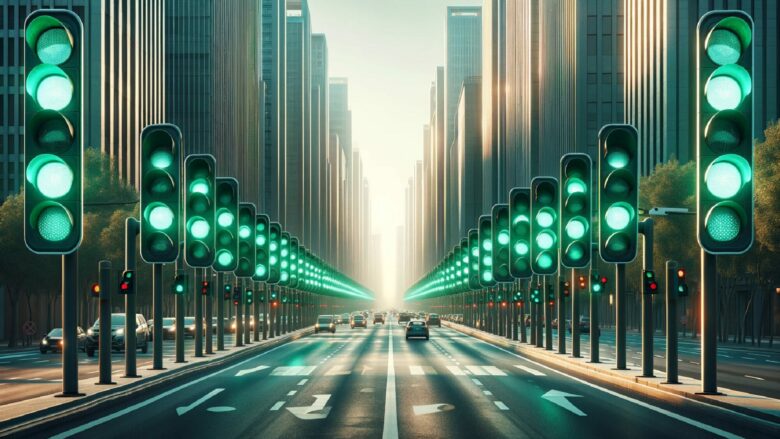Google Green Light: How Maps data enables the “green wave”

The green wave: This is the goal of efforts in modern road traffic to enable drivers to minimize their stops at red lights. Smoother traffic should not only save a lot of time and frustration but also significantly reduce CO2 emissions from cars. An important project in this area comes from Google: The “Green Light” project is currently in use in 14 cities and more are to follow soon.
“Green Light” can reduce air pollution
Google has been working on Green Light for about a year, reports the Wall Street Journal. Accomplishing the green wave will not require any new hardware. Instead, it will use data collected directly from new, internet-connected vehicles or from navigation apps on drivers’ phones. This can help cities adjust the timing of their traffic lights to better align them with real traffic patterns. The cars themselves essentially serve as sensors.
Google Green Light is used in Abu Dhabi, Hamburg, Seattle and Calcutta, among others. According to Google, the system can reduce stops at intersections by 30 percent. This should make a big difference to the carbon footprint. Studies show that air pollution at intersections is about 29 times higher than on open roads due to idling.
STILFOLD launches MetaFold Academy to nurture green manufacturing in Europe
Google uses data from Google Maps
Google is using its own data, coming from Google Maps users, to optimize the traffic light system. A big advantage of this is that it saves the costly and time-consuming studies that are normally required to change the timing of a traffic signal, says Henry Liu of the University of Michigan, whose team is itself researching the possibilities of green waves. Such studies require counting the number of cars at a particular intersection over the course of a day. In the US, this costs around $5,000 each time, which is why traffic light systems only receive updates every five years.
Green Light aims to solve this problem. When cities sign up for the project, they receive a dashboard that gives them recommendations for updating the timing at certain intersections. Importantly, Google’s AI-powered system evaluates how traffic patterns change after the traffic light schedules are updated, allowing cities to measure the real-world results of their changes.
Green Light expands to more cities
In Seattle, Green Light’s data convinced traffic planners to update the traffic lights at five intersections starting in June 2022. After subsequent analysis, those updates were retained at four of the intersections. The city continues to use the system alongside traditional methods. Green Light currently has a waiting list, but the project is quickly expanding to new cities that Google plans to announce later this year.






























